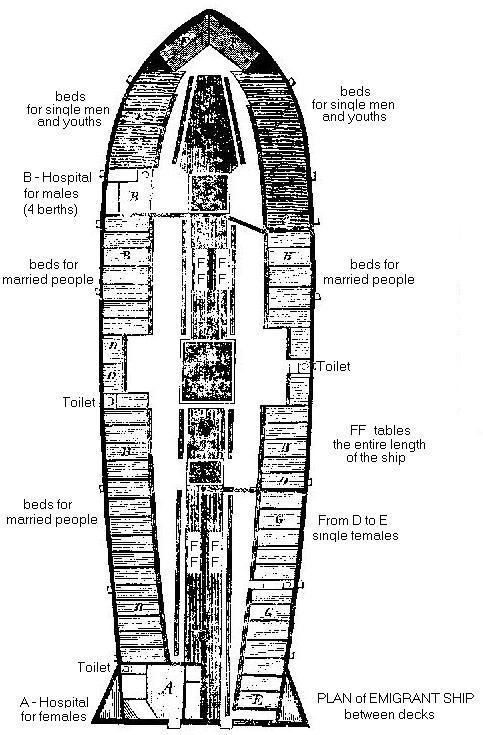BEGINNING YOUR JOURNEY
from England, Scotland, Ireland, Germany and elsewhere |
 to Australia |
to list the passengers on board that ship from the PASSENGER LIST held by the Captain. The reporter's list was published in the next publication of the newspaper. We understand that microfilms of the SOUTH AUSTRALIAN REGISTER Newspapers are held in State Libraries across Australia. More often than not, these published lists are the only source available of a passenger list for a particular ship. Where possible we have compared these list with photocopies of the actual passenger list (many of which are difficult to read). As a result, the information on some images may not be 100% accurate. Given the difficulty Agents must have had in understanding the people applying for a passage (they often could not read or write, and their language was often "broad" and hard to understand), and how difficult it probably was for the reporter to interpret the writing on the actual passenger list, we are often amazed at how accurate (or how incorrect) these lists can be.
|
1841: there were ... persons in the colony. 1844: The first census, on the 26 February 1844, recorded 17,366 people. 1861: Some 25 years after the first settlers arrived, this number had increased to 126,830.
NOTE: The contents of these pages are the combined work of many people and whilst we aim for accuracy in all we do, remember Murphy's Law. |

Website designer: Di Cummings
 SA PASSENGERS in Alphabetical order, per year, from 1836-1851 - currently 62,000 families.
SA PASSENGERS in Alphabetical order, per year, from 1836-1851 - currently 62,000 families.